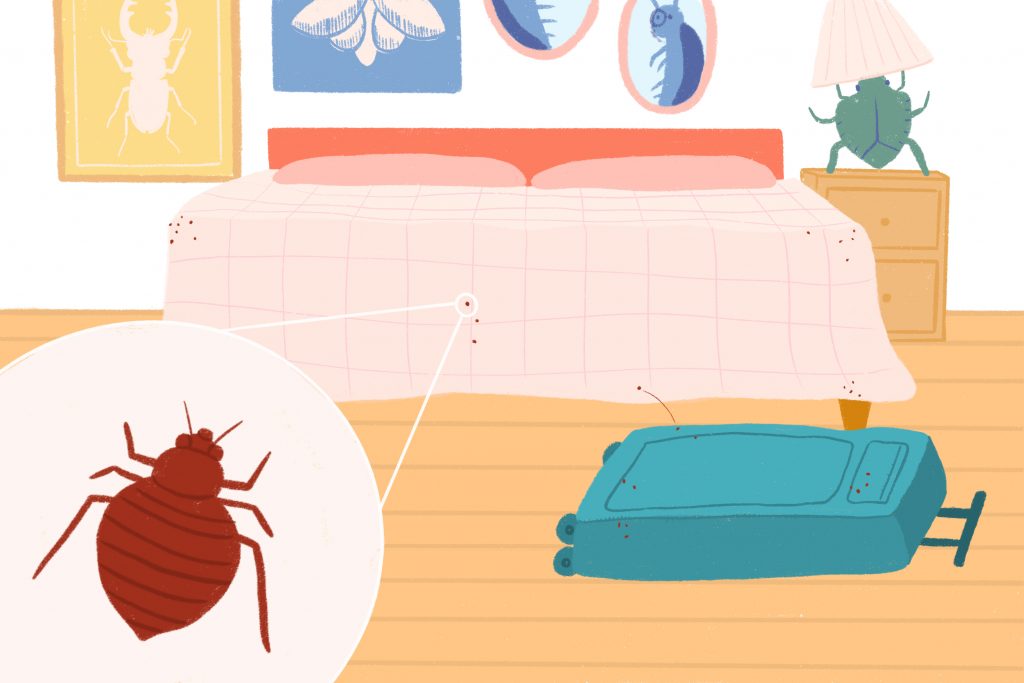As someone who has recently undergone a bed bug treatment, you may be wondering what to expect after your first bed bug treatment. The good news is that, with the right approach and the help of an experienced pest control company, you can rest assured that your home is free from bed bugs. In this guide, I’m going to cover the steps you can take to ensure successful bed bug eradication and what to expect throughout the process.
Identifying a Bed Bug Infestation
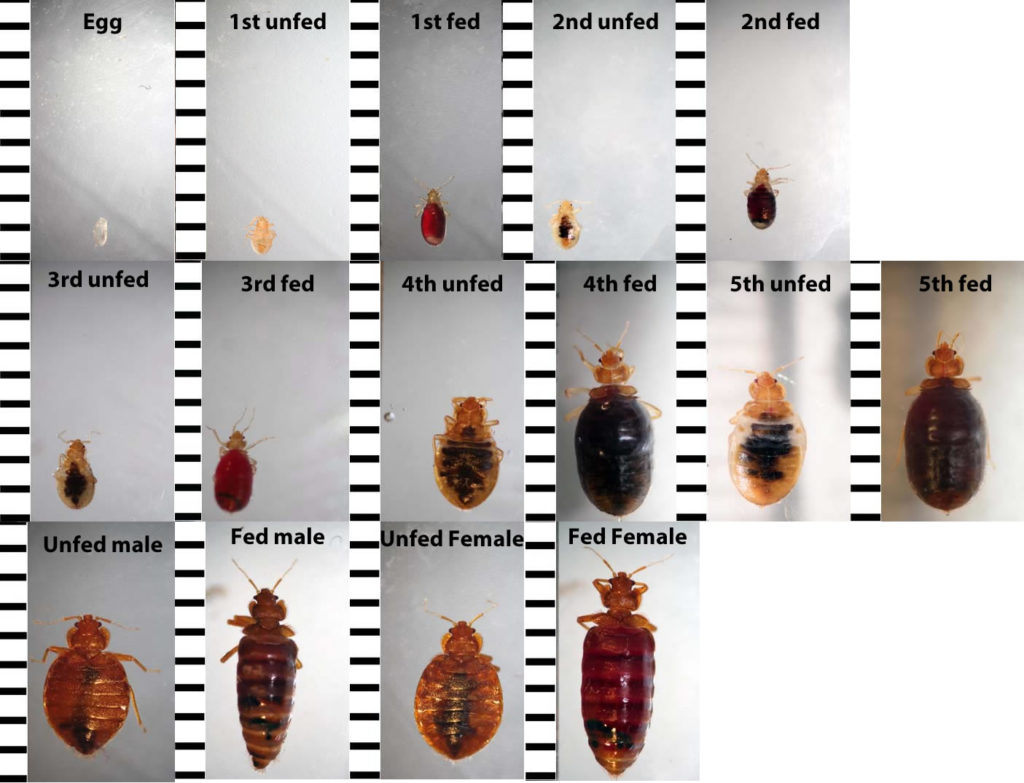
Bed bugs can be hard to identify, especially early on in an infestation. They are small, flat, and oval-shaped, and can be anywhere from 1-7mm in size. They are reddish-brown in color, and their bodies swell after they have fed. Bed bugs are most active at night when they come out to feed, and they prefer to hide in dark, warm places during the day – such as the corners of mattresses, bed frames, and cracks in furniture.
The surest way to identify a bed bug infestation is to look for physical evidence of bed bugs. This might include live bugs, shed skins, or small black spots on fabrics from their droppings. You may also notice small bite marks on your skin, or an unpleasant, musty odor in the room.
If you suspect you have a bed bug infestation, it’s important to call in a professional pest control service to identify and treat the issue. A professional can help you determine the extent of the infestation and the most effective treatment plan.
Signs of Bed Bugs
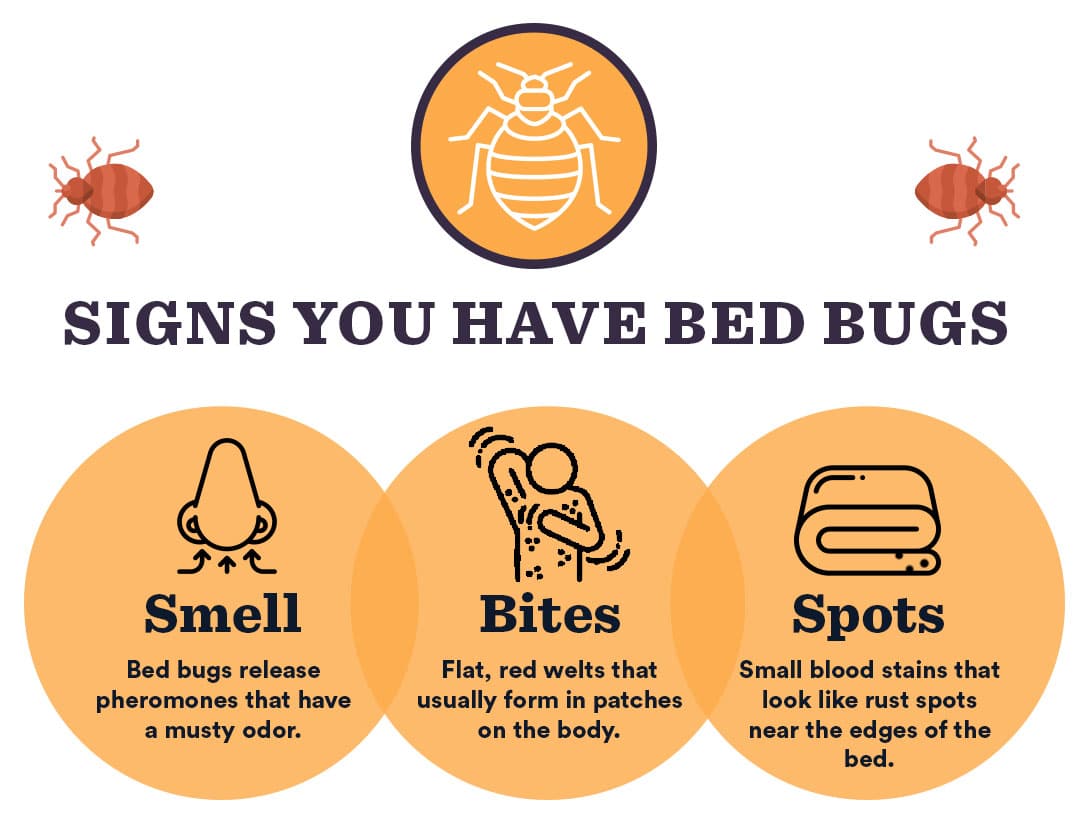
- Blood stains on your sheets or pillowcases.
- Dark or rusty spots of bedbug excrement on sheets and mattresses, bed clothes, and walls.
- Bedbug fecal spots, egg shells, or shed skins in areas where bedbugs hide.
- An offensive, musty odor from the bugs’ scent glands.
- Live bedbugs in mattress seams, bed frames, headboards, box springs and other furniture.
If you’ve seen any of these signs, it’s likely that you have a bed bug infestation. After the first treatment, it’s important to monitor for further signs of bed bugs. Regularly inspect your bedding, furniture and carpets for any evidence of bed bugs. If you find any, contact a pest control professional for further treatment.
Bed Bug Treatment
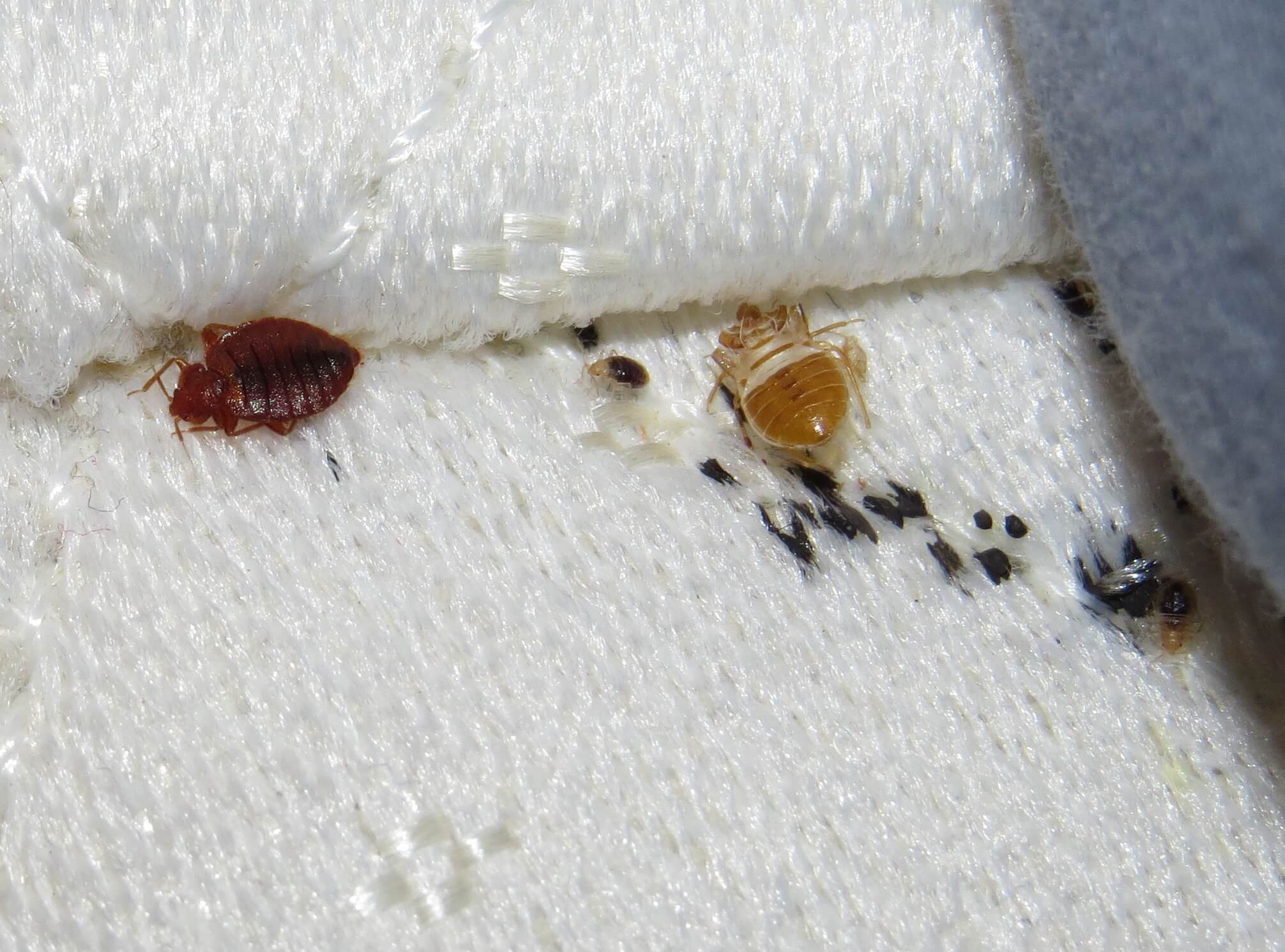
The first step in any bed bug treatment is to identify the infested area. This is usually done by a professional pest control technician. Once the infested area is identified, the technician will then begin the treatment process. This may involve the use of pesticides, heat, or other methods. The technician will also discuss the best course of action for the particular situation.
| Treatment | Description |
|---|---|
| Pesticides | Pesticides can be applied to the infested area to kill bed bugs. This may require multiple applications over a period of time. |
| Heat Treatment | Heat treatment is a non-chemical method of killing bed bugs. This process involves using hot air, steam, or heated water to kill the bugs and their eggs. |
| Vacuuming | Vacuuming the infested area may help to reduce the number of bed bugs in the area. This should be done regularly to help reduce the chances of re-infestation. |
| Encasement | Encasements can be used to prevent bed bugs from hiding in mattresses and box springs. This helps to reduce the chances of re-infestation. |
The technician will also provide advice on how to reduce the chances of re-infestation. This may include recommendations to regularly vacuum the infested area, seal up any cracks or crevices, and use an encasement on mattresses and box springs.
After the treatment is complete, it is important to monitor the infested area for any signs of bed bug activity. This can be done by regularly checking for bed bugs or eggs. If bed bug activity is detected, it is important to contact a professional pest control technician to re-treat the area.
Preparation for Treatment
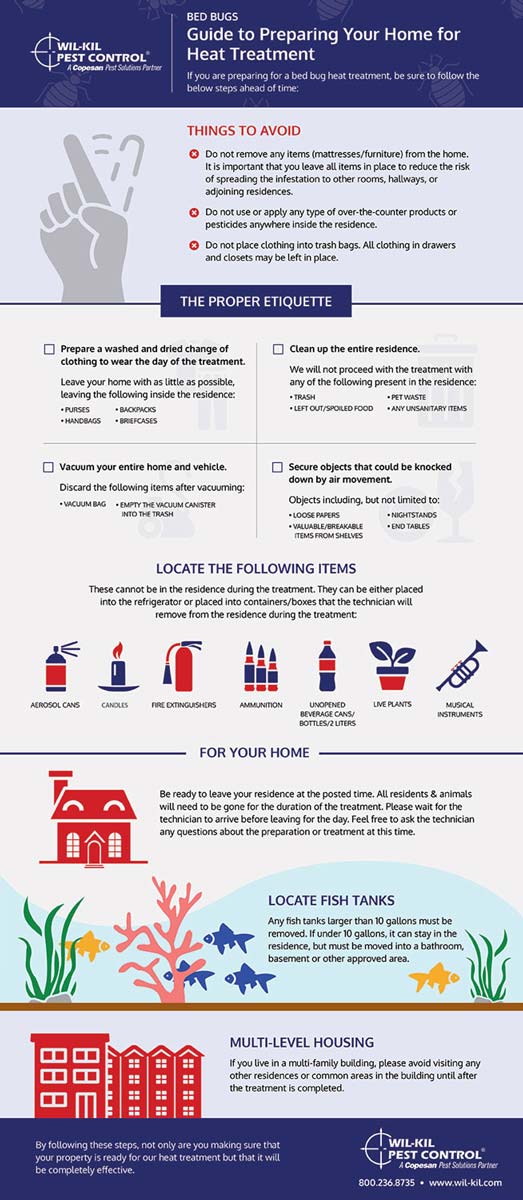
Before the treatment begins, there are some important steps I need to take. Firstly, I need to ensure that all of my clothing and bedding is clean. This means washing all of my clothing and bedding in hot water and drying them on the highest heat setting. Additionally, I should vacuum the floors and furniture to remove any eggs and adult bed bugs. I should also empty my closets and drawers, and remove any clutter that might be hiding bed bugs.
| Steps | Description |
|---|---|
| Clean Clothing and Bedding | Wash all clothing and bedding in hot water and dry on highest heat setting |
| Vacuum Floors and Furniture | Remove any eggs and adult bed bugs |
| Empty Closets and Drawers | Remove any clutter that might be hiding bed bugs |
Common Treatment Methods
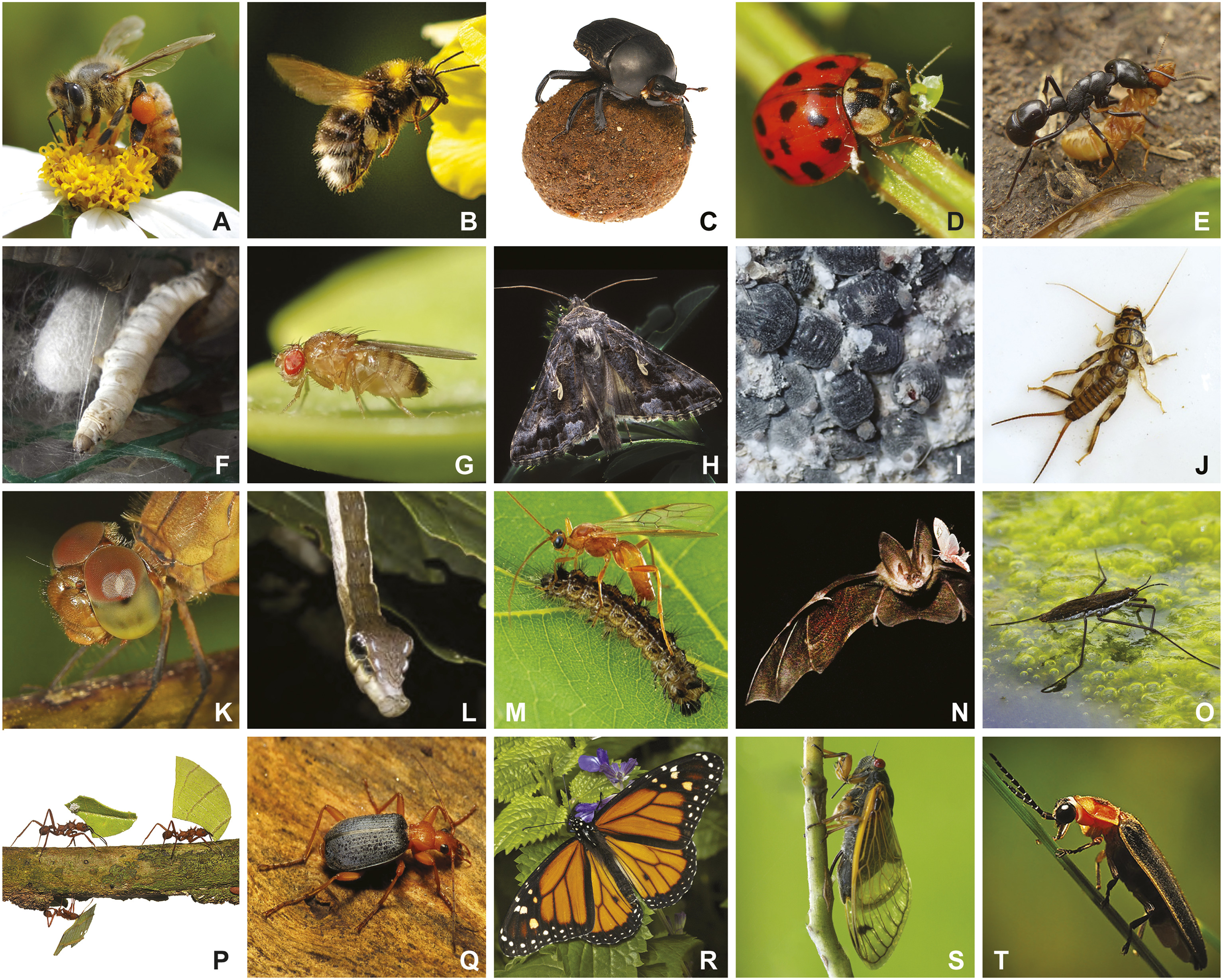
Chemical Pesticide Treatment
Chemical pesticide treatment is the most common form of bed bug treatment. It involves using an insecticide to kill bed bugs and their eggs. This treatment can be done by a professional pest control company or by yourself. It is important to follow the instructions of the product carefully, as some pesticides can be dangerous if not used properly.
Heat Treatment
Heat treatment is another form of bed bug control. This method uses extreme temperatures to kill bed bugs and their eggs. This treatment is usually done by a professional pest control company, but can also be done by yourself.
Cryonite Treatment
Cryonite treatment is a relatively new form of bed bug control. This method uses liquid carbon dioxide to freeze the bed bugs and their eggs, killing them instantly. This treatment is usually done by a professional pest control company.
Fumigation
Fumigation is a form of bed bug control that involves using a gas to kill bed bugs and their eggs. This treatment is usually done by a professional pest control company, as it can be very dangerous if not done properly.
After Treatment Care
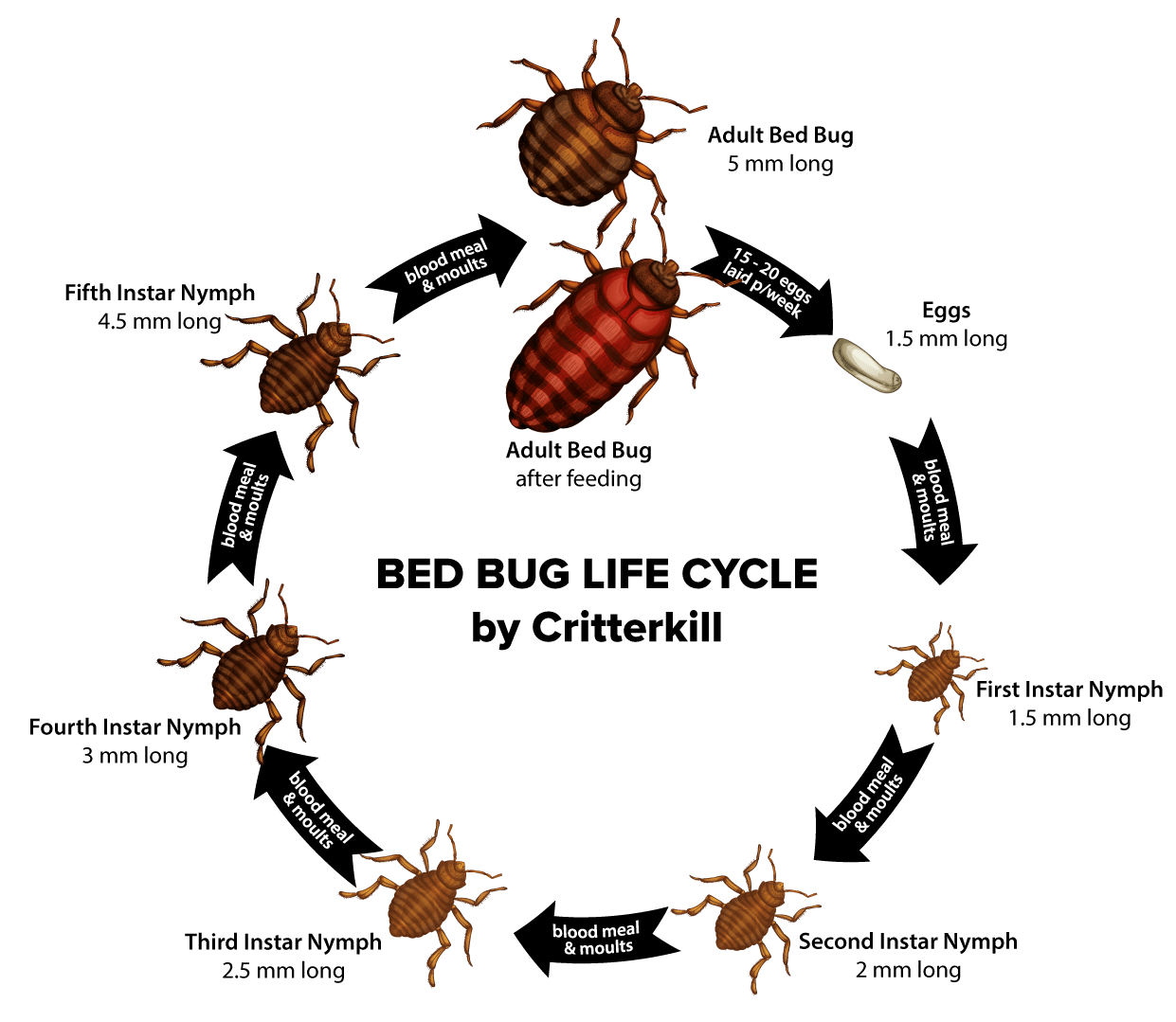
After the initial bed bug treatment, I need to take certain precautions to make sure the treatment is as effective as possible. I should vacuum the affected area thoroughly to remove any eggs that might have been missed during the treatment. I should also make sure to throw away the vacuum bag afterwards. I should also keep an eye on the area for any bed bugs that may have survived the initial treatment and call my exterminator if I see any. I should also consider using mattress covers to further protect against any bed bugs that may still be in the area. Lastly, I need to make sure to keep the area clean and clutter-free to prevent any future infestations.
1 Reducing the Risk of Re-Infestation
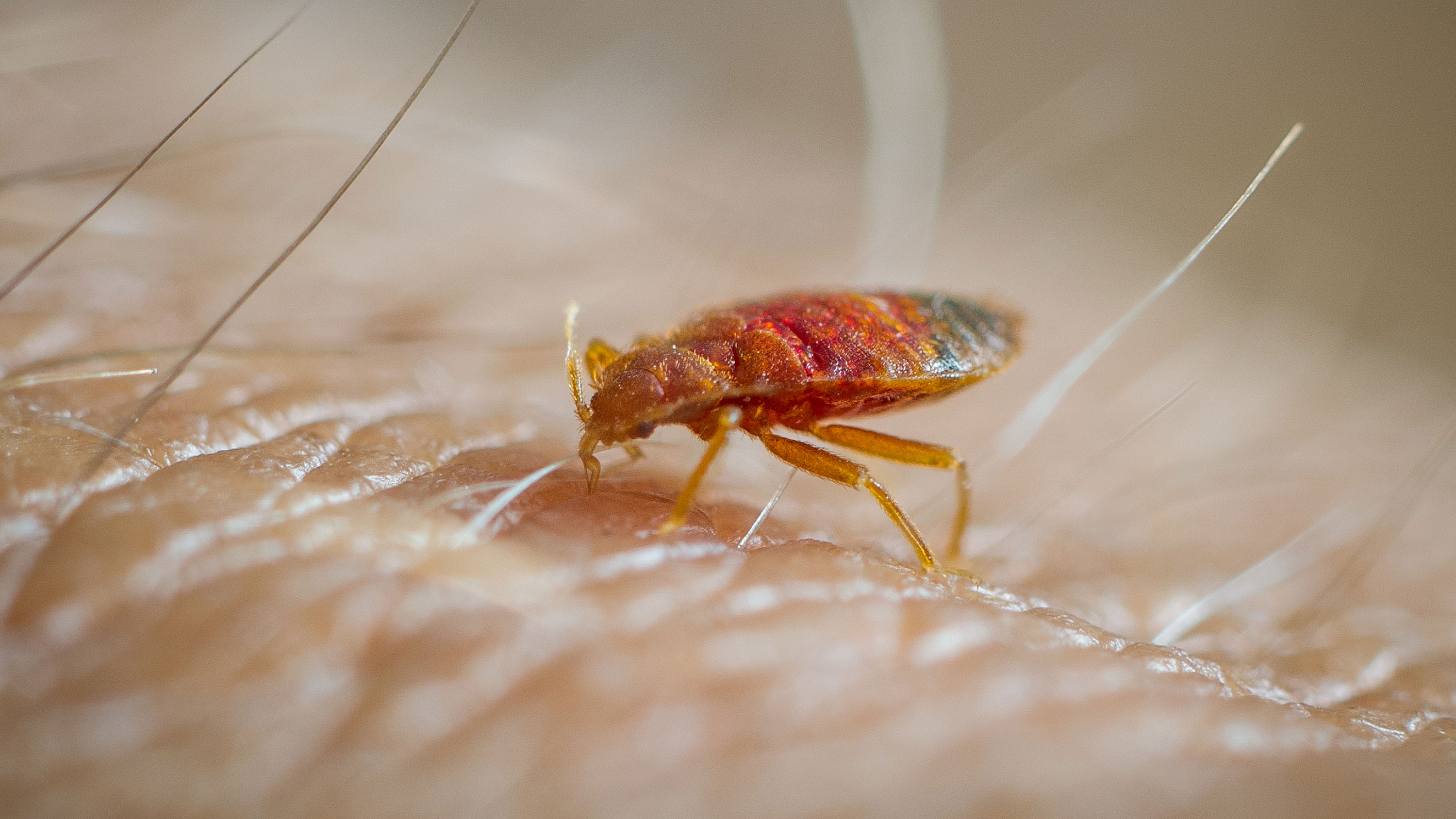
- Vacuum carpets, rugs, and furniture to remove any bed bugs and eggs.
- Wash all bedding, linens, curtains, and clothing in hot water and dry on the highest heat setting.
- Seal mattress seams and box spring seams in mattress encasements.
- Inspect furniture, picture frames, and electrical outlets for bed bugs.
- Seal cracks and crevices around baseboards, trim, and wall outlets with caulk.
- Replace any torn screens in windows and doors.
- Discard any items that cannot be effectively treated.
2 Disposing of Infested Items
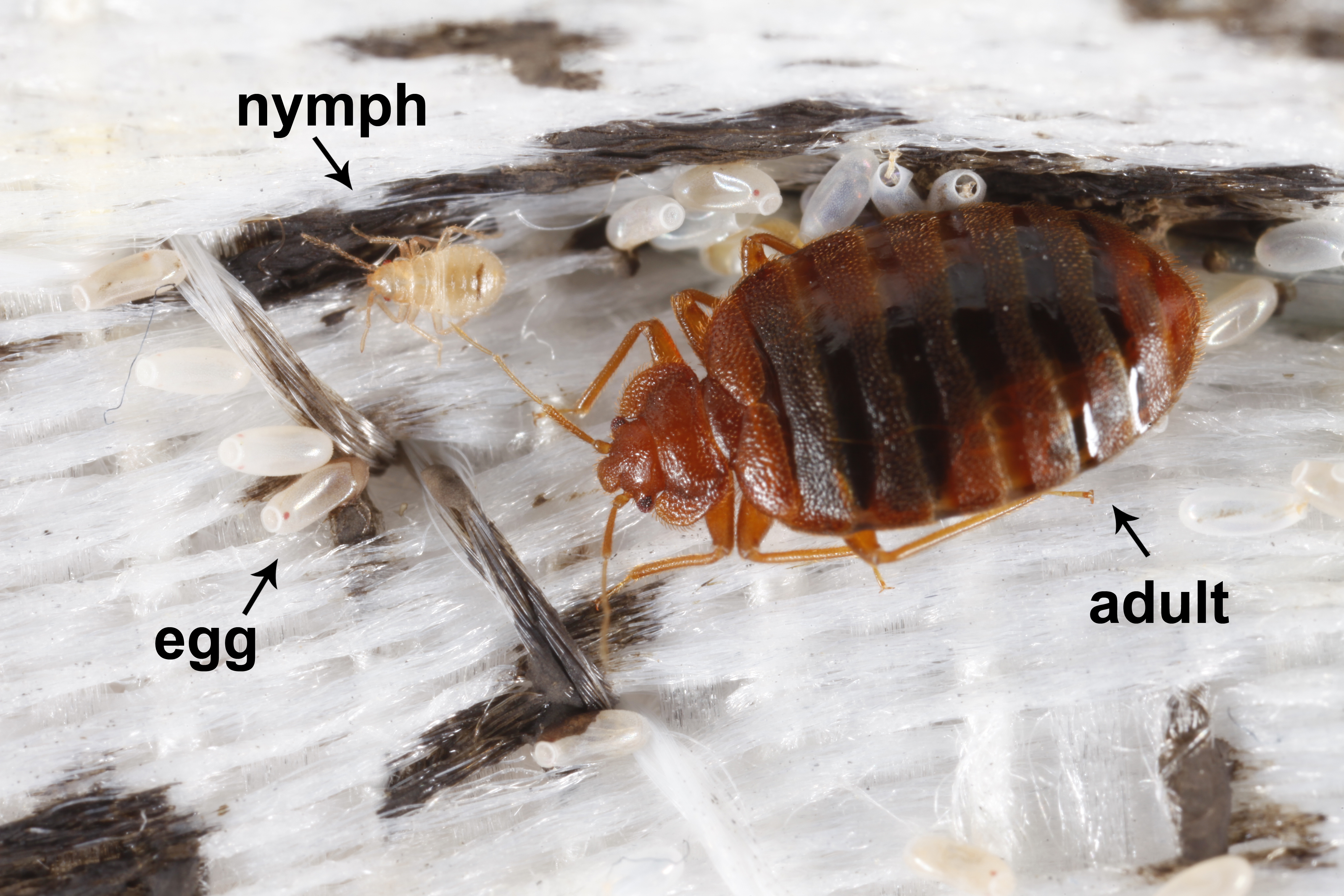
- Check all items that are infested with bed bugs, such as furniture, bedding, and clothing, and dispose of them in a sealed plastic bag.
- Take the sealed plastic bags to an outdoor trash receptacle for disposal.
- If there are items that are too large to fit in a bag, such as mattresses or furniture, have them professionally disposed of.
- Wash all items in hot water and dry them on the highest dryer setting for at least 20 minutes.
- Vacuum all carpets and furniture thoroughly and discard the vacuum bag after use.
3 Cleaning Up
| Task | Timeframe |
|---|---|
| Wash all bedding, linens and clothing in hot water for at least 30 minutes and dry on the highest heat setting | Immediately |
| Vacuum all mattresses, box springs and furniture | Immediately |
| Steam all furniture, mattresses, box springs, carpets and baseboards | 1 week after initial treatment |
After the initial bed bug treatment, I need to do some cleaning up. This includes washing all bedding, linens and clothing in hot water for at least 30 minutes and dry on the highest heat setting. I also need to vacuum all mattresses, box springs, and furniture. Lastly, I need to steam all furniture, mattresses, box springs, carpets, and baseboards one week after the initial treatment.
4 Monitoring
After the first bed bug treatment, I should monitor my home carefully. I should look for signs of infestation, such as discarded shells and live bed bugs. I should inspect the bedrooms and other common areas for evidence of bed bugs.
I should check my mattress, box springs, bedding, and furniture for signs of bed bugs. I should also check for eggs, larvae, or adult bed bugs. I should pay close attention to the seams of my mattress and any cracks or crevices in my bed frame.
I should also inspect my clothes, luggage, and other items for signs of bed bugs. I should look for droppings, eggs, larvae, or adult bed bugs.
Finally, I should check my pets for any signs of bed bug bites or infestation. I should check their fur, ears, and any other area where bed bugs may be present.
| Monitoring | Actions |
|---|---|
| Bedrooms and common areas | Inspect for bed bugs |
| Mattress, box springs, bedding, and furniture | Check for shells, eggs, larvae, and adult bed bugs |
| Clothes, luggage, and other items | Look for droppings, eggs, larvae, and adult bed bugs |
| Pets | Check fur, ears, and other areas for bed bug bites or infestation |
When to Call a Professional
- If you notice any bed bugs after the treatment.
- If you notice bites on your body.
- If the infestation persists after the treatment.
- If you have an infestation larger than what you can handle.
I should call a professional if any of the above things happen. Professionals can usually identify the source of the bed bug infestation and can provide treatments that are tailored to the specific situation. They can also use specialized equipment to help with the removal of the bed bugs.
Frequently Asked Questions
How long after the first bed bug treatment can I expect to see results?
The time it takes for results to be seen after the first bed bug treatment varies depending on the type of treatment used and the severity of the infestation. Generally, it can take anywhere from two weeks to a month to start seeing a reduction in the number of bed bugs. It is also important to note that multiple treatments may be necessary to completely eradicate the infestation.
How long do bed bugs live after being treated with insecticides?
Bed bugs typically die within a few days of being treated with insecticides. However, it is also important to note that all life stages of bed bugs are vulnerable to insecticides, and eggs may take up to two weeks to hatch and die. Therefore, it is important to continue to monitor the affected area for several weeks after treatment to ensure that any surviving bed bugs or new hatchlings are eliminated.
How long after spraying for bed bugs is it safe to return to the area?
It is generally recommended to wait at least 72 hours after the initial spraying before returning to the area, as this is the amount of time needed for the insecticide to take full effect. Make sure to ventilate the area thoroughly before returning. It is also important to keep an eye on the area for any signs of bed bug activity. If activity is observed, contact a pest control professional immediately.
What steps should I take after a bed bug heat treatment?
It is important to take specific steps after a bed bug heat treatment in order to ensure that the treatment is effective. Immediately after treatment, all items should be removed from the area and vacuumed thoroughly. Vacuuming will help remove any remaining bed bugs and their eggs. All items should be cleaned and inspected before replacing them in the treated area. Bed bug monitors or traps should be used to monitor the affected area for any remaining bed bugs. Professional pest control services should be contacted if bed bugs are still present after the heat treatment.
How long after extermination do bed bugs typically die off?
Bed bugs typically die off within a few days after treatment. However, they may take up to two weeks to completely die off. During this time, you may still see live bed bugs. It is important to be patient and monitor the situation as the extermination process can take a few weeks. It is also important to make sure to follow the instructions of your pest control specialist in regards to post-treatment practices.
Conclusion
Bed bug infestations can be difficult to manage and eradicate. After the initial treatment, it’s essential to follow up with additional treatments to ensure that all the bugs and their eggs have been eradicated. Regular inspections and preventive measures can help keep bed bugs from coming back. With the right plan and a bit of patience, you can successfully eliminate bed bugs from your home.
